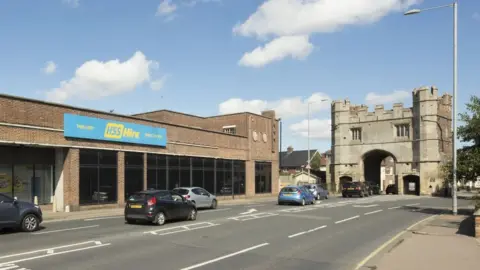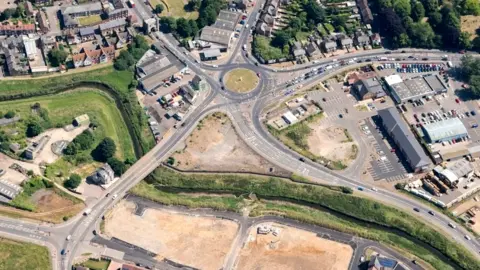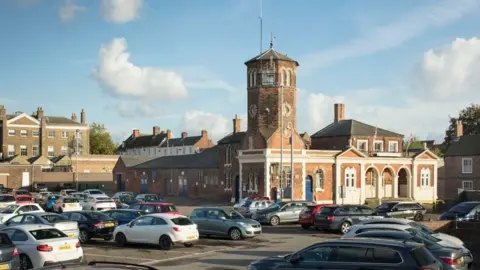King's Lynn history found under car parks
 Patricia Payne
Patricia PayneThe main road entrance to an historic port in Norfolk was once on the site of a river and was surrounded by shipyards, researchers have discovered.
Historic England examined three sites in King's Lynn to trace what they were like in the past.
The South Gate still stands but the river has disappeared, the historic Corn Exchange has survived, but many timber-framed houses are gone.
Researchers will reveal more in talks at the Town Hall during May and June.
 Damian Grady
Damian GradyThe South Gate, on the A148 London Road, has been the main entrance to the town for 580 years, and researchers say it was built on the site of a river bridge.
The river has gone and the Heritage Action Zone report found evidence that the area was once home to shipyards, timber works and a coaching inn.
In the 16th Century, the modern-day Common Staithe Quay car park was a public dock surrounded by warehouses.
The Corn Exchange arts centre, a Georgian house once occupied by Barclays Bank, and other Georgian and Victorian buildings all stand on an area which was once a maze of warehouses.
 West Norfolk Borough Council
West Norfolk Borough CouncilChapel Street car park was occupied from the late 13th Century and by the 16th Century it had become densely developed with timber-framed, and possibly stone, buildings, the researchers said.
John Neale, from Historic England, said: "This work gives us vital information that will help us lay the foundations for what comes next for Lynn development and regeneration."
